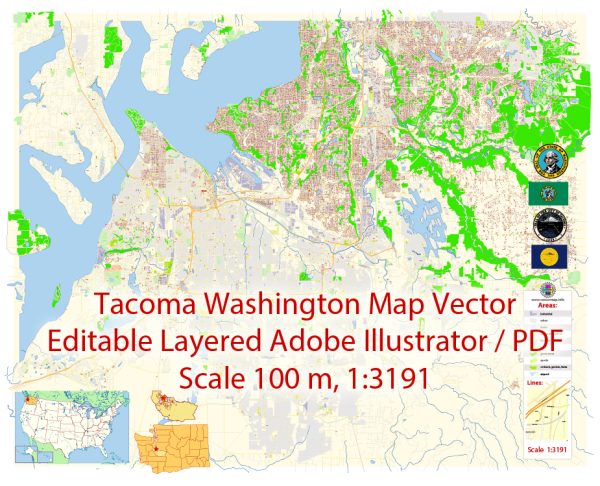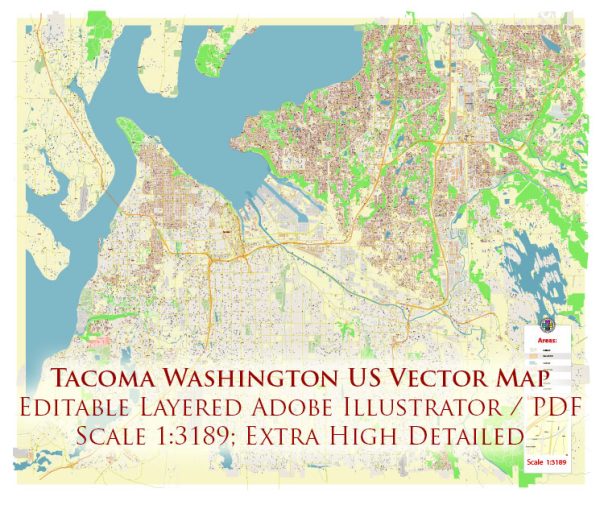Tacoma, located in the state of Washington, has a rich history of urban development that spans the late 19th century to the present day. Here is a brief overview of key periods and developments in Tacoma’s urban history:
- Founding and Early Growth (Late 19th Century): Tacoma was founded in the late 19th century as a terminus of the Northern Pacific Railroad, and its early growth was closely tied to the railroad and the bustling commerce it brought. The city quickly developed into a major industrial and transportation hub.
- The Fire of 1889: In 1889, a devastating fire swept through downtown Tacoma, destroying a significant portion of the city. This event led to the implementation of stricter building codes and the construction of more fire-resistant structures in the rebuilding process.
- Economic Diversification (Early to Mid-20th Century): Tacoma’s economy diversified in the early to mid-20th century, with the growth of industries such as lumber, shipping, and manufacturing. The Port of Tacoma played a crucial role in the city’s economic development, facilitating trade and contributing to the growth of the waterfront area.
- World War II and Postwar Period: Tacoma experienced a population boom and economic expansion during World War II due to the demand for industrial and military production. After the war, the city continued to grow as returning veterans settled in the area. This period also saw suburbanization and the development of residential neighborhoods outside the city center.
- Urban Renewal (1950s to 1970s): Like many American cities during this time, Tacoma underwent urban renewal efforts. Some historic buildings were demolished, and there were attempts to modernize the urban landscape. The construction of Interstate 5 had a significant impact on the city’s layout, affecting transportation patterns and neighborhood dynamics.
- Downtown Revitalization (Late 20th Century): In the late 20th century, Tacoma focused on revitalizing its downtown area. Efforts included the restoration of historic buildings, the development of cultural institutions like the Museum of Glass and the Washington State History Museum, and the creation of public spaces like Union Station and the University of Washington Tacoma campus.
- Waterfront Redevelopment (21st Century): Tacoma’s waterfront has undergone significant redevelopment in the 21st century. The Thea Foss Waterway, once an industrial area, has been transformed into a mixed-use district with residential, commercial, and recreational spaces.
- Cultural and Arts Scene: Tacoma has also seen the growth of a vibrant cultural and arts scene, with numerous galleries, theaters, and music venues contributing to the city’s cultural identity.
Throughout its history, Tacoma has faced challenges such as economic shifts, urban renewal controversies, and efforts to balance development with the preservation of historic character. Today, the city continues to evolve as it strives to maintain a balance between growth, preservation, and community development.



 Author: Kirill Shrayber, Ph.D.
Author: Kirill Shrayber, Ph.D.